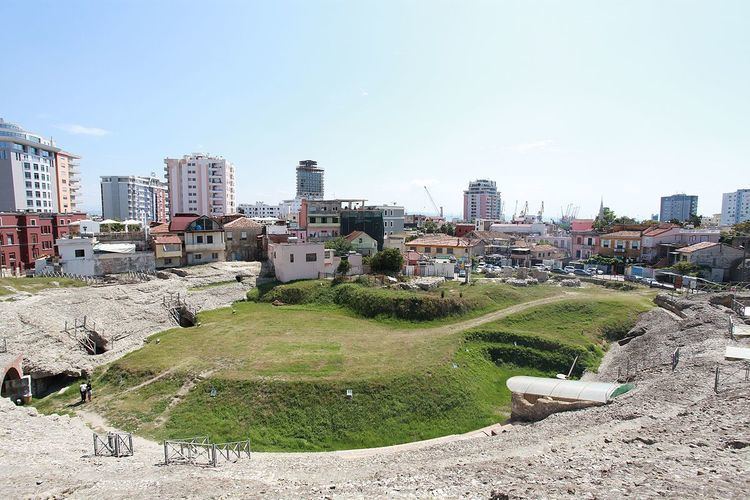Type Roman amphitheatre Periods Roman Empire Condition ruins Length 132 m Region Illyria | Founded 2nd century AD Excavation dates 1900s, 1960s Height 20 m Width 113 m Period Roman Empire | |
 | ||
Location Durrës, Durrës County, Albania Address Rruga Kalase, Durrës, Albania Hours Open today · 8AM–4PMWednesday8AM–4PMThursday8AM–4PMFriday8AM–4PMSaturday8AM–4PMSunday8AM–4PMMonday8AM–4PMTuesday8AM–4PM Similar Fatih Mosque - Durrës, Durrës Archaeological Museum, Beach of Durrës, Adriatik Hotel, Royal Villa of Durrës | ||
Durr s amphitheatre
The Durrës Amphitheatre (Albanian: Amfiteatri i Durrësit) is a large Roman amphitheatre in the city of Durrës, Albania. Built in the 2nd century AD during Roman Emperor Trajan's rule, it is located in the centre of the city and is only half unearthed. The Durrës Amphitheatre is one of the largest amphitheatres in the Balkan peninsula, once having a capacity of 20,000 people, and has no analogs in Albania. It was discovered in the late 1900s and today has become a popular tourist attraction. Durrës Amphitheatre is a World Heritage candidate.
Contents
History
The amphitheatre was built in the beginning of the 2nd century AD. The amphitheatre was used for performances until the 4th century AD. The earthquake of 345/346 likely damaged the monument and closed the 'ludii gladiatorii'. An early Christian chapel was constructed on the amphitheatre in the second half of the 4th century. The chapel was initially decorated with frescoes; in the 6th century, mosaics were added. A medieval chapel was built in the 13th century, also decorated with frescoes. The amphitheatre was covered over in the 16th century, after the Ottoman occupation, when the wall was built nearby. Marin Barleti described the monument as 'well constructed'.
About one third of the site was discovered and excavated in the 1960s by Vangjel Toci; the rest was excavated in the 1980s by Lida Miraj. After excavation the amphitheater slowly deteriorated, as no conservation efforts were undertaken prior to the 2000s, and construction continued to take place around the site. In the 2004 the University of Parma started restoration work to save the monument.
Site
The amphitheatre has an elliptical shape with axes of 132.4 metres (434 ft) and 113.2 metres (371 ft). The arena is 61.4 metres (201 ft) by 42.2 metres (138 ft) and is 20 metres (66 ft) high. It is built on a slope of the hill, and inside the amphitheatre there are staircases and galleries at different levels. The chapel with mosaics is preserved.
The site currently functions as a museum.
Dangers
The amphitheatre is surrounded on all sides by the city of Durrës, and a section of the arena itself has been built upon with modern housing. Thus, development pressures threaten the long-term preservation of the site. The municipality of Durrës is now planning to remove the houses.
The amphitheatre has serious structural deficiencies, and its mosaics and paintings are slowly decaying.
In 2013, the amphitheatre was shortlisted along with thirteen other sites by Europa Nostra as one of the most endangered cultural heritage sites in Europe.
